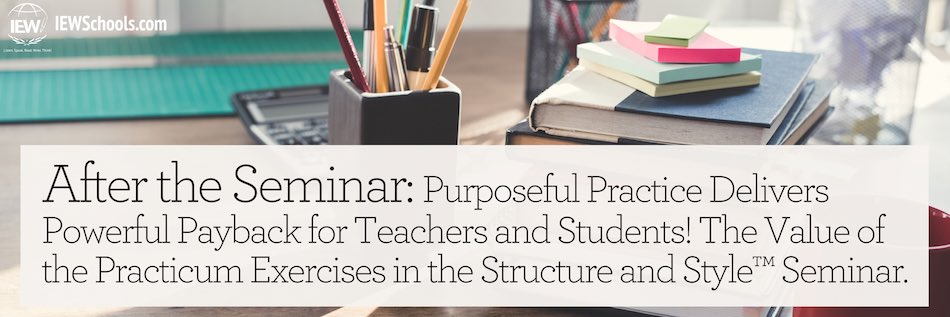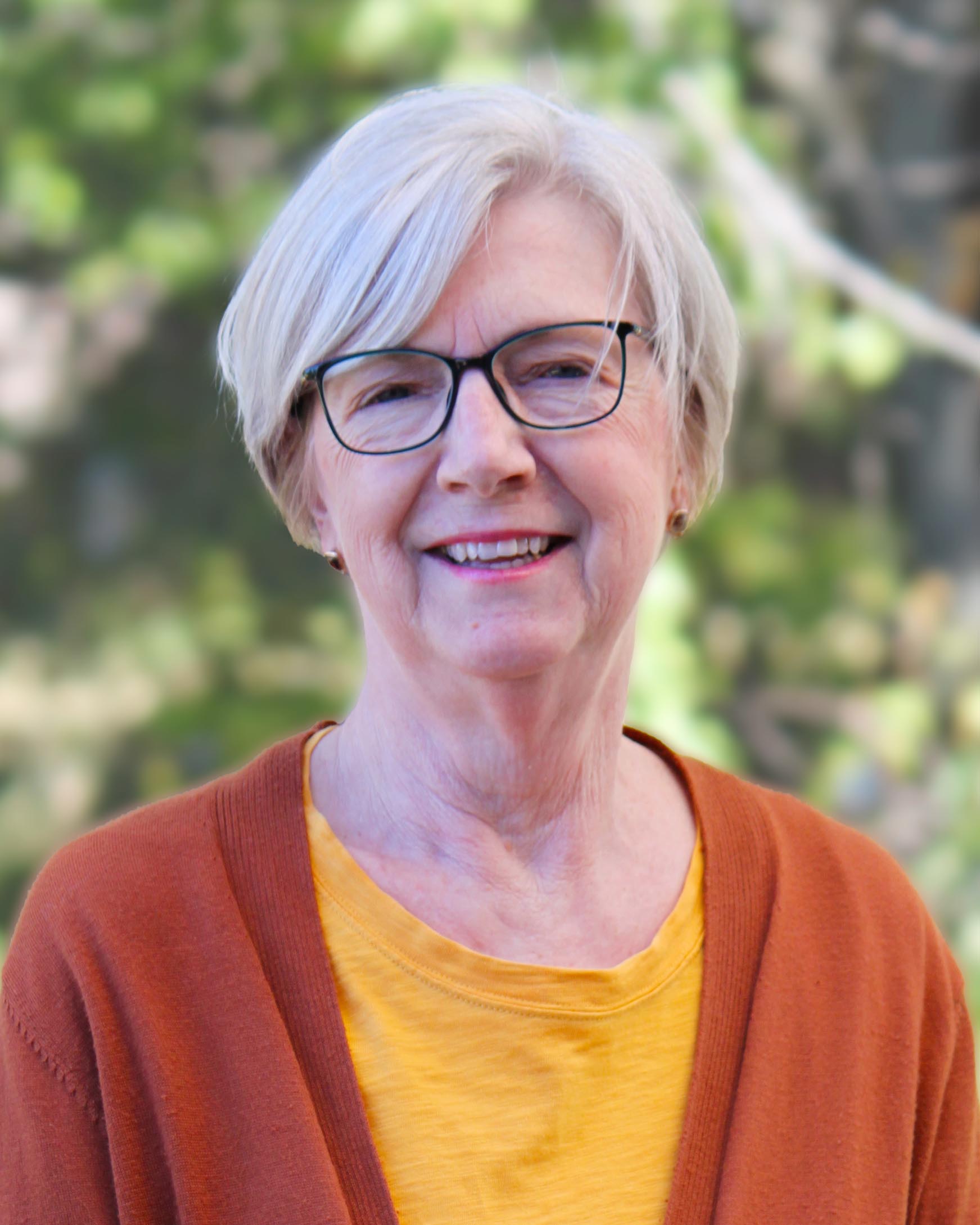
Summertime is not always a vacation from learning for teachers. While their students are enjoying a break from school, many teachers take classes and workshops to improve their skills or work toward an advanced degree or teaching credential. Is learning the Structure and Style™ method on your agenda this summer? If so, make sure you are getting all the value you can from the experience!
Are you are training at school using DVDs, at home using video streaming, or attending a live IEW seminar? However you are learning the course, there is one critical step you should take to ensure you are getting the most out of your training—completing the practicum exercises. Why is this so important?
The best way to master the Structure and Style process is to practice it. During both the live and video seminar presentations, participants are asked to complete practicum assignments—one or more exercises for each unit intentionally designed to help you better understand the writing process before you teach it to your students. Some assignments are done together during the seminar (writing the “Booklice” key word outline, telling it back, and writing the “Booklice” paragraph, for example), while others are completed independently once the seminar is over (such as writing the three Lady Mixing paragraphs in Unit 5 or the fused outline elephant paragraph in Unit 6).
The practicum exercises are intended to give you a greater appreciation of and empathy for what your students will experience as they learn the methodology. This improves your classroom instruction tremendously and helps you avoid the danger of introducing the stylistic techniques too quickly. We’ve observed that when teachers work through each structural model themselves, they understand how each unit works and are much better prepared to model the process clearly and effectively to their own students.
Additionally, completing the practicum assignments
-
gives you an experiential understanding of how the method of selecting key words changes from unit to unit (e.g., choosing key words from every sentence in Units 1 and 2, from answers to questions in the Story Sequence Chart in Unit 3, and from interesting or important details about a topic from one source text in Unit 4, etc.);
-
provides a clearer picture of how the questioning strategies (thinking skills) build from unit to unit (e.g., “What are the key words in this sentence?” in Unit 1 and 2, “What are the interesting or important details about this topic?” in Unit 4, and “What is my opinion about this topic?” and “Which details support my opinion?” in Unit 8);
-
contributes significantly to teaching the process with fidelity;
-
furnishes firsthand experience in the progression of the stylistic techniques; and
-
provides a deeper understanding of the “big picture” of Structure and Style.
Likewise, the IEW Schools Division recommends that principals require teachers to complete these practicum assignments as part of a successful school implementation. Your administrator may not require that you complete the exercises, but we strongly encourage you to do so anyway—for your own benefit as well as your students’.
What’s more, completing the assignments is fun! IEW founder Andrew Pudewa compares the Structure and Style process to building with Legos®.
Without some coordinated pieces and a plan, it’s difficult to produce something of aesthetic or even practical value. The “creative” experience can be frustrating and not fun. However, if you give kids a variety of colorful pieces, proportionately shaped, along with some possible diagrams or illustrations for their use, creativity suddenly explodes! Provide the pieces—key words and style checklists, along with a model and a process to follow—and … voilà! Composition becomes less of a chore and more of a puzzle, a creative game, an achievable challenge.
No matter which method you choose to learn the Structure and Style writing process, taking time to complete each practicum exercise provides a powerful payback for you as a teacher in your journey to becoming a masterful teacher of writing!
If you would like more information about IEW’s training and classroom instructional materials for grades K–12, email Schools@IEW.com or call 800.856.5815 to speak to an educational consultant.
Become an IEW Accredited Instructor! ![]()
Once you’ve completed the assignments, why not consider becoming an Accredited IEW Instructor? For more information, read Plan! Prepare! Persist! by IEW Educational Consultant Sharyn Staggers and visit the Become a Registered Instructor page on the IEW website.
Do you need CEUs?
IEW is pleased to partner with Liberty University to offer continuing education units (CEU) for teachers who complete our Teaching Writing: Structure and Style video course or live seminar.
Steps to fulfillment for a live seminar
-
Attend a live two-day event.
-
Sign the roster at the event.
-
Complete the course registration through Liberty University’s Center for Professional & Continuing Education (CPCE).
Steps to fulfillment for the video course
-
Watch the Teaching Writing: Structure and Style video course.
-
Complete the practicum assignments along with the additional requirements for becoming a Registered Instructor through our IEW® Instructor Accreditation program.
-
Once you have been notified that your application is approved, you may complete the course registration through Liberty University’s Center for Professional & Continuing Education (CPCE).
Structure and Style® is a trademark of the Institute for Excellence in Writing, L.L.C.
LEGO® is a trademark of the LEGO Group of companies which does not sponsor, authorize, or endorse this site.
|
Jean brings 34 years of classroom experience to IEW, having taught grades 1–6 in New York, Virginia, and in California, where she taught sixth-grade language arts in the Rocklin Unified School District. She was introduced to IEW in 2001 when a colleague shared Student Writing Intensive videos at weekly school staff meetings. As a result of student progress and teacher enthusiasm at her school, RUSD brought Andrew Pudewa to Rocklin many times over the next several years to train district teachers, resulting in improved student writing and test scores district-wide. Named Rocklin’s “Elementary Teacher of the Year” in 2001, Jean was also included in the 2004 and 2005 editions of Who’s Who Among America’s Teachers. |

